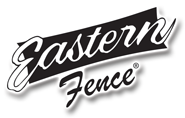Have you ever considered how fencing has evolved in America? How the early settlers might have used fencing and what materials they used to construct fences? In the early days of the America, fences were deemed even more crucial than they are today! Fences were highly valued and necessary for many reasons: clearly defining the boundaries of properties, providing protection from intruders, keeping animals contained, and keeping unwanted animals away from gardens or valuable stock.

Fencing was a necessity
In many cases today, fencing could be described as a luxury, for use as a decoration rather than a realistic and practical necessity to everyday life and work. Back in the earliest days of colonial America, the settlers prioritized fence building as one of the most important tasks within the settlement next to land clearing and crop planting. John C. Calhoun said during his life in the early 19th century that “they [fences] cost more and are of more importance to us as an agricultural people than any other department of domestic industry!” A good fence often made all the difference between crop success and failure during that time when animals ran wild. Although, fencing for decorative purposes was not unheard of later on in our history. Sometimes made of stone or brick, what we would call “walls” would be erected on the grounds of churches and the homes of political leaders. If you have ever visited Williamsburg, VA, it will give you a good idea about the fencing during that time.

Fencing materials
Early on, it was commonplace to use whatever type of wood was available from the surrounding trees to build fences. The location of land clearing defined what sort of timber was used, because it was already felled, and why waste it? Opinions about using certain woods for specific purposes slowly formed and surfaced. The following quotes are from a New York resident who lived in the 19th century. He had this to say about installing fences in wet or cold areas:
“Post-and-rail fences…are very good where the soil is dry, and the same may be observed of board fences; but, where the soil is wet, the posts will be thrown out by the frosts. In all cases, the posts ought to be set at least 2 feet in the ground.”
He also had some expertise on what kind of wood to use for what purposes:
“Log-fences are often made on new-cleared lands…White-pine log-fences are very good, and will last 20 years without any essential repairing. Clear white-pine timber may, however, be split into rails, which are very durable. All kinds of wood will last much longer in rails, when the bark is peeled off. . .
Red-cedar is best for posts. Locust, chesnut, butternut, and black-walnut are also good. Good oak will also last pretty well. Burning the ends of the posts which go into the ground, so as to make them black, will make them last longer…”
Early fence laws
If you have ever gone through the fencing process, especially in the Frederick City area or within an HOA, you know all about fencing rules and regulations. Height, style, material, and location of gates all have the possibility be restricted in some way. But where did this begin? And why?
Laws regarding fencing were proposed and established as early as 1631 in Virginia. “Every man shall enclose his ground with a sufficient fence” was the first directive given. Next, in 1643, the law was added to: “that every man shall make a sufficient fence about his cleared ground.” The interpretation of this second legislation was that every grower would be responsible for any loss of crops due to free roaming animals. They were now the ones responsible to erect and maintain a fence “sufficient” enough to keep animals out. But, what did a “sufficient” fence look like? What were the parameters? By 1646, the answer became clear: 4 ½’ tall and “substantial at the bottom.”

Common styles of fencing
Brush fence– This was a quick and cheap form of fencing because it was made from whatever was available. They were most often created from the otherwise unusable “brush,” logs, and stumps being cleared from the land. All items were wedged between two parallel posts, creating a sturdy barrier.
Wattle fence– Willow was a popular material used to construct this type of fencing. Shallow posts were placed in the ground, then the individual proceeded to meticulously weave branches in between the posts, one directly on another and starting at the bottom and working upwards. The result was a sturdy, woven, private style of fencing that was great for gardens, borders, and even animal enclosures.
Post and rail fence – This fence would have been almost exactly like the split rail fences that we install today.
Palisade fencing– A vertical style of fence using strong, thick stakes or posts. This fencing was often used in defensive measures. Today, we would call this a stockade fence, but with much stronger pickets.
Paled fence– Similar to a wood picket fence you would see today.
Worm fence– You may have seen this style on some historic battlefield or other. Worm fences are simply stacked rails that create a zig-zagging fence (pictured below). No digging is necessary with this style of fence because it does not require posts. Worm fencing was commonly used in heavily forested areas or on very rocky ground.


The above article about the history of fences was written using the following resources. Feel free to follow any of these links to learn more about historical fences in America!
https://heald.nga.gov/mediawiki/index.php/Fence
https://buzzfence.com/happy-fourth-of-july-looking-back-at-fencing-in-colonial-america/
https://www.vafb.com/Portals/FBA/PDFs_and_Resources/membership_at_work/overview-fence-law-1-19.pdf







